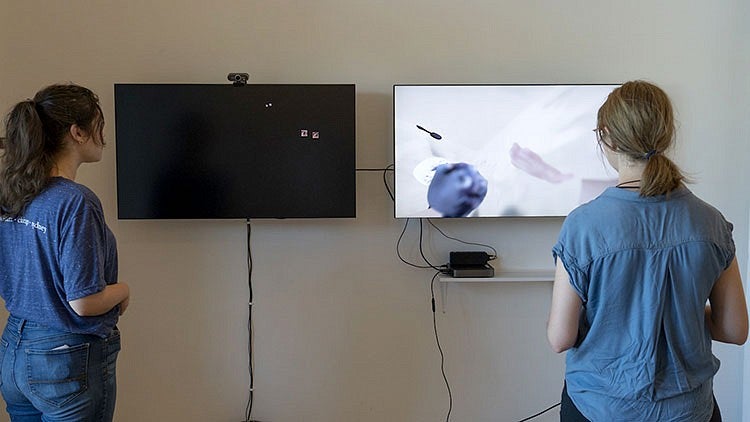BA and BS Degrees
Two different majors—Art and Art & Technology—are offered at the bachelor's degree (BA or BS) level.
Our art degrees involve intensive and wide-ranging work in studio art. You will be challenged to build your technical and conceptual understanding as well as to think for yourself to cultivate unique and individual approaches. Tailor your education by pursuing advanced coursework in the areas that most interest you.
BFA Degrees
The department offers two BFA degrees—a BFA in Art & Technology and BFA in Art with a concentration in one of the following media areas: Ceramics, Fibers, Jewelry and Metalsmithing, Painting and Drawing, Photography, Printmaking, or Sculpture.
Minors
Two minors—Art and Multimedia—are offered.
Find Your Media Area
See which medium interests you most. Perhaps paint, charcoal, metal, clay, fiber? We have nine areas to choose from.

Courses Open to Nonmajors
We invite you to explore your interest in art. All art courses are open to nonmajors as long as you have satisfied the prerequisites. These are just a few of the courses you can try as a nonmajor:
ART 101 Understanding Contemporary Media (4 Credits)
Critical exploration of concepts surrounding and defining the experience of understanding contemporary art.
ART 111 The Artist Experience (4 Credits)
Critical exploration of concepts surrounding and defining contemporary art through the examination of the individual studio practice of members of the art faculty.
ART 115 Surface, Space, and Time (4 Credits)- Introduces interdisciplinary media processes, critical theory, formal communication design, color theory, skills in objective evaluation and critique, and how materials, processes, and context establish meaning.
ART 116 Core Interdisciplinary Laboratory (4 Credits)- Rigorous studio projects in the core studio sequence stressing interdisciplinary media transitions and the interrelatedness of conceptual and formal concerns. Prerequisite: ART 115.
ARTD 199 Creative Coding (4 Credits)- Learn computer programming by making four different creative projects. Introduction to hands-on coding with the goal of gaining digital literacy by creating tangible take-away objects
ARTD 250 Print Media Digital Arts (4 Credits)- Examines application of print media in contemporary visual culture. Explores its use in a fine art context. Introduces digital drawing, digital photo editing, and typographic layout to visually communicate expressive concepts.
ARTD 251 Time-Based Digital Arts (4 Credits)- Explores the notion of time as a medium in relation to contemporary art through which concepts of sequence, narration, scoring, and motion are expressed.
ARTD 252 Interactive Digital Arts (4 Credits)- Introduces resources that the computer offers the artist. Concentrates on animation, interaction, and the web as expressive mediums.
Undergraduate Exhibitions

BFA exhibitions mark the culmination of years of rigorous studio investigation and critical discourse. Artists engage a wide breadth of art-making practices that build on and challenge the histories of painting, sculpture, photography, print media, craft and digital practices.
Let Us Show You Around
We offer tours throughout the academic year.
Alumni Spotlight

Artist Crystal Gregory (BFA, ’08), now an assistant professor of fiber arts at the University of Kentucky, discovered weaving after high school.
“There was something about the textures, the materials, and process that kept me mesmerized,” Gregory said. She found the fiber arts community in the Department of Art, coming under the tutelage of Associate Professor Emeritus of Art Barbara Pickett (also resident director of the Fibers in Florence study abroad program) and former Assistant Professor Josh Faught. “It is so wonderful to reflect back on how these faculty really shaped who I am as an artist and what I have done so far,” Gregory said.
Enrich Your Academic Experience
Scholarships
There are a variety of opportunities for majors in the Art Department to apply for financial assistance. These opportunities range in scope from support for tuition and supplies to travel or merit awards.
Our Accreditation
National Association of Schools of Art and Design (NASAD)
The Northwest Commission on Colleges and Universities (NWCCU)
The University of Oregon is a member of the Association of American Universities (AAU), an organization made up of more than 60 leading public and private research institutions in the United States and Canada.





